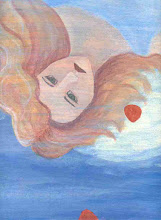The Great Gatsby, by F. Scott Fitzgerald, 1925.
This is one of my favorite banned books -- now. Just like everyone else, I read this book in high school. Just like everyone else, I didn't get much out of it back then. I remember "Blah, blah, blah, Jazz Age" and "Blah, blah, blah, symbolism" and "Blah, blah, blah, foreshadowing". The problem was never with this book; the problem was the way that literature was taught. If I could have just read the book cover to cover on my own, I would have enjoyed it so much more. So, when I was in my twenties, I did, and then bought a whole lot more Fitzgerald.
The Great Gatsby IS about the Jazz Age. There is strong symbolism in this book -- the green light. And there is quite a bit of foreshadowing (and foreboding) in this book -- "the all-seeing eyes". But there is also layer upon layer of wonderful in this book.
When I first read this book, I wasn't the least bit sympathetic toward Daisy. Now, almost thirty years later, I do have some sympathy, but it is limited. When I first read this book, I didn't even really think about the child, much like Gatsby doesn't. Now, when I have a child, I kept wondering what happened to her. And that, I think, is the genius of this book and Fitzgerald's writing.
Like Jane Austen before him, he is excellent at portraying his times and making his character breathe by having them speak and act in a way that is so very real. I can relate to this book at different times in my life because I can relate differently to all the characters (and symbolism) at different times in my life. I'm older now than Daisy, Gatsby, Tom and Nick. I can stand back and know what will happen before it does happen, and I can change nothing. I am "the all-seeing eyes".



















